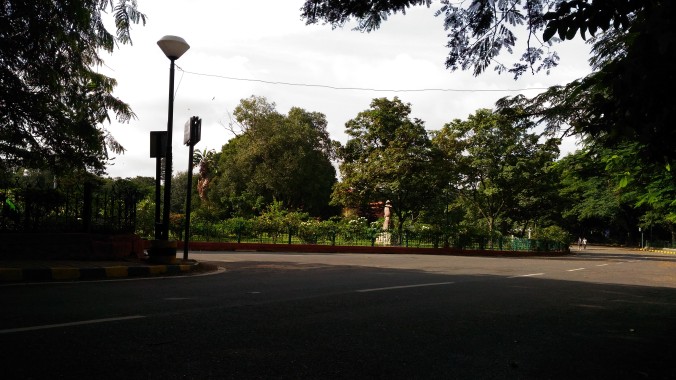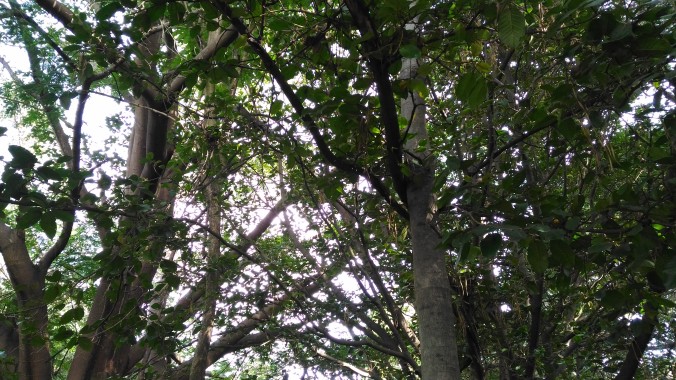Gentle breeze, swaying trees. Vast stretches of greenery, as far as one’s eye can see. Canine companions and feathered friends, frolicking about under the shining sun.
No, don’t worry, I have not suddenly morphed into a (bad) poet unleashing a barrage of rhyming words and alliteration upon the unsuspecting reader. It is just that I am back after a refreshing visit to Cubbon Park (CP), one of our most sought-after weekend mini-picnic locations. For those of you who don’t know, CP is an island of tranquility in the Central Business District, amidst the bustling, cacophonous city that Bangalore has become.

At least 1-2 times a month, our Sunday ritual typically includes rising early to reach the park by 7.30 AM followed by a walk/jog/cycling for forty minutes or so across its vast expanse, followed by a round of healthy juices and concoctions (made up of one of more of these – gooseberry, jamun, lemon, carrot, ginger, beetroot, அருகம்புல் – you name it and it is available) sold by a friendly old man right outside the park and finally, winding up with a hearty breakfast at our regular eatery on the way back home.
One reason that we keep our weekend date with CP without fail is that a good sixty minutes in the lap of nature is a rejuvenating experience is like no other. Whether you choose to amble along holding the hands of a loved one or simply take a brisk walk all by yourself, the pristine beauty of nature impacts you deeply. The greenery has been fortunately preserved well and now it is also interspersed with interesting, man-made art work and structures – including various totem poles and carvings on wood.

The dense foliage never fails to mesmerize me every time. The canopy of leaves and branches, like in the picture above, remind me of a knotted bunch of nerves, and sometimes are so thick, that sun rays struggle to penetrate. Dotting the park are islands of rose gardens, grass carpeted mini-parks and tree lined cul-de-sacs where you can choose to sit quietly with the family and savor the nippy mornings, or play a sweaty game of tennikoit.
On Sundays, vehicles are not allowed inside the park and that means swarms of people like us who turn up in the park early in the morning for running, exercising, walking their dogs, cycling, doing Yoga in various contorted positions or simply uproariously laughing as part of their laughter club activities, can continue their quality time with nature and each other undisturbed. One side of the park is reserved for Sunday festivities. So you would chance upon a band playing, Bharatanatyam performance, an exhibition for organic produce or a Carnatic recital, depending on what the day’s agenda is.
Today being Independence Day, was extra special. There was festive fervor all around. Fluttering tricolors, merry kids playing with green-white-saffron ribbons, and cyclists and athletes in “I love India” T-shirts. There was also a line up of vintage cars strapped with tricolored ribbons and balloons. We also spotted a few media vans, with reporters milling around trying to get patriotic sound bytes from visiting families and park employees, who were of course more than happy to comply.
————————-
Turns out our favorite eatery was not exempt from the Independence fever either. There were special menus and waiters dressed in tricolor T-shirts buzzing across the place, serving the unusually large crowd of guests with smiles and cheer. What’s more, kids got gifts packets of savories, sweets and chocolates with warm wishes of ‘Happy Independence Day’. There were selfies galore, and joy and warmth reverberated all around.


The specials on the menu were ‘Independence Day’ Idlis and Dosas. Wow, it was certainly a sight to behold.
Soaking in the spirit of ID, I did my bit too – and added an impromptu Independent Day salad below for lunch. After all, fever tends to be highly contagious, right?


